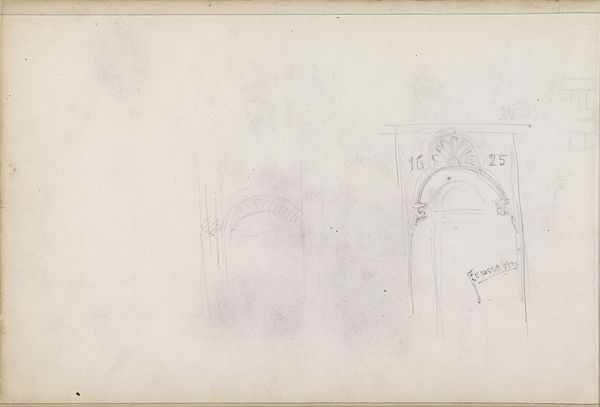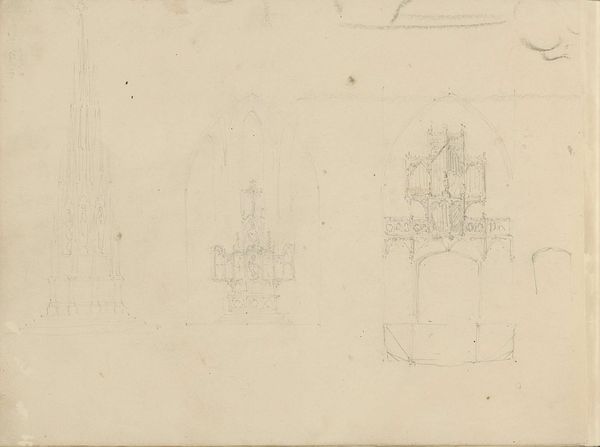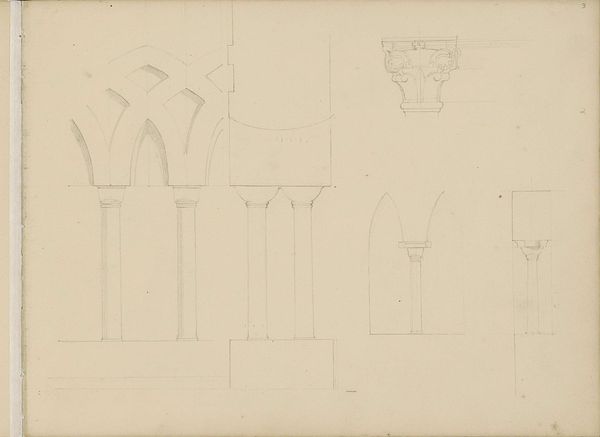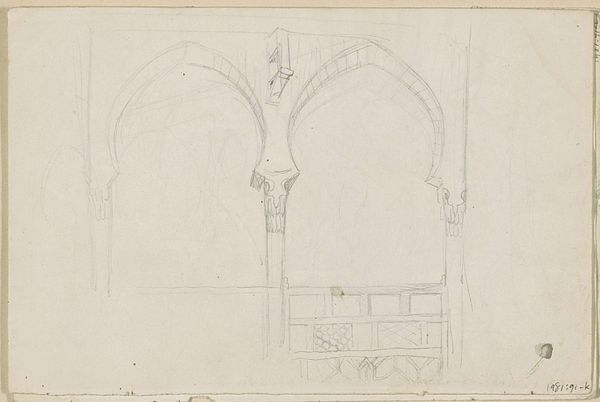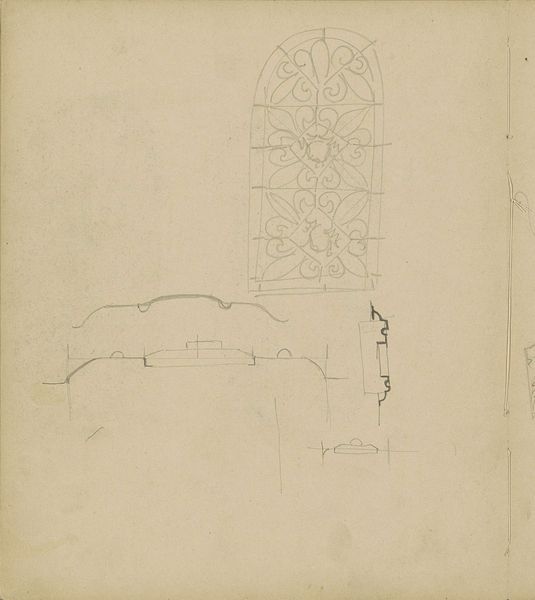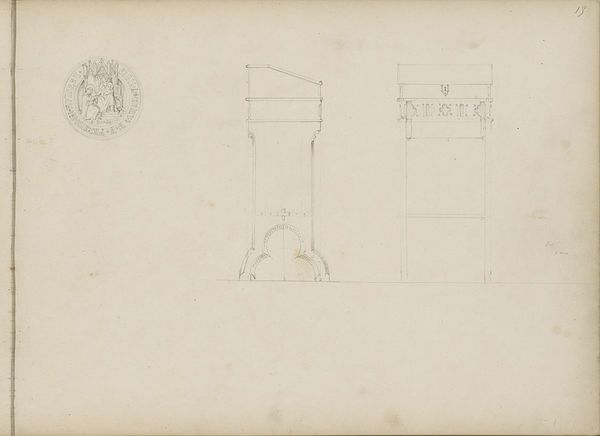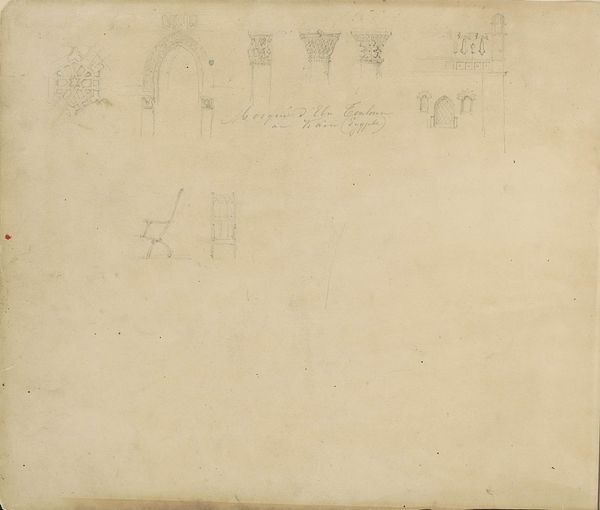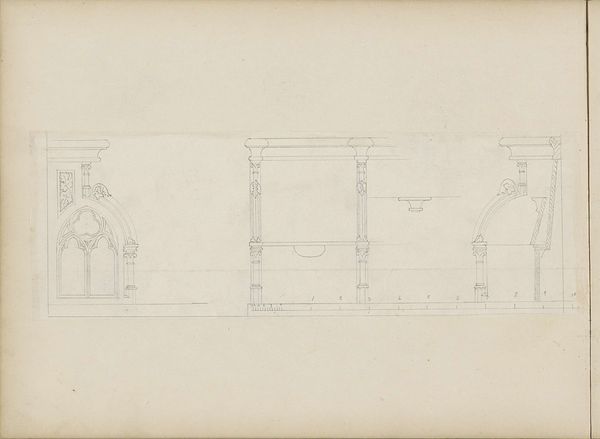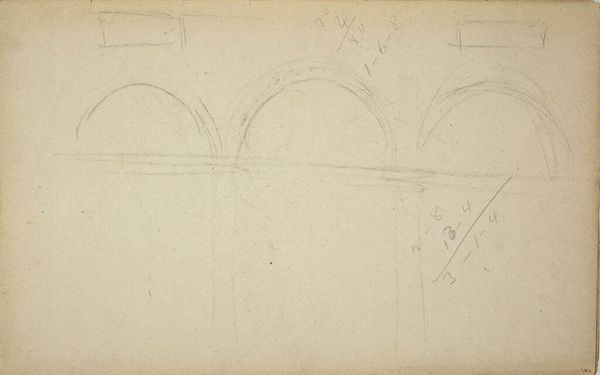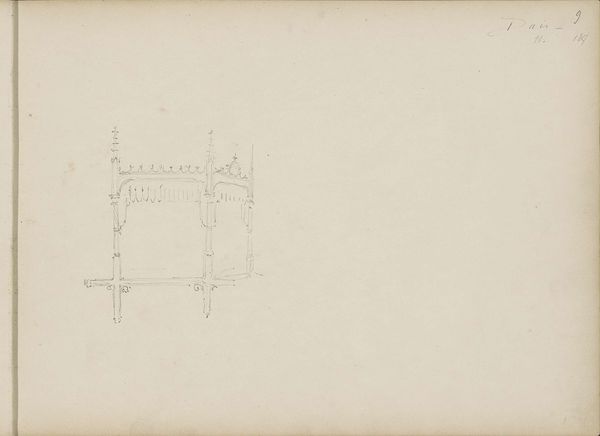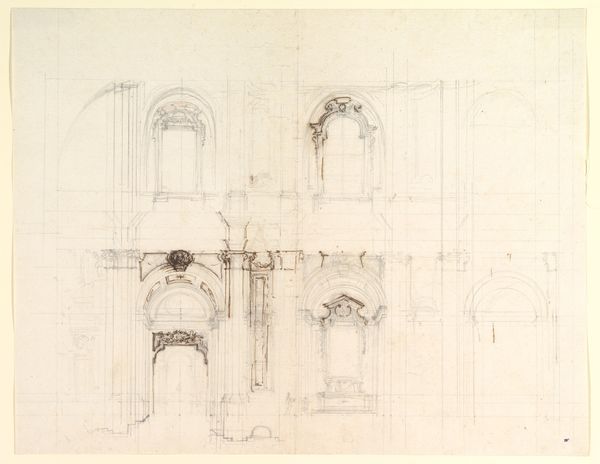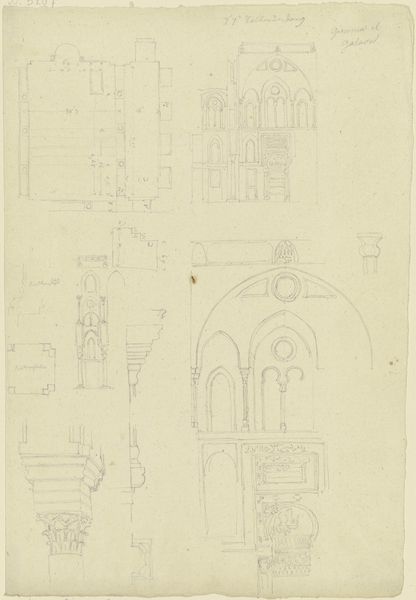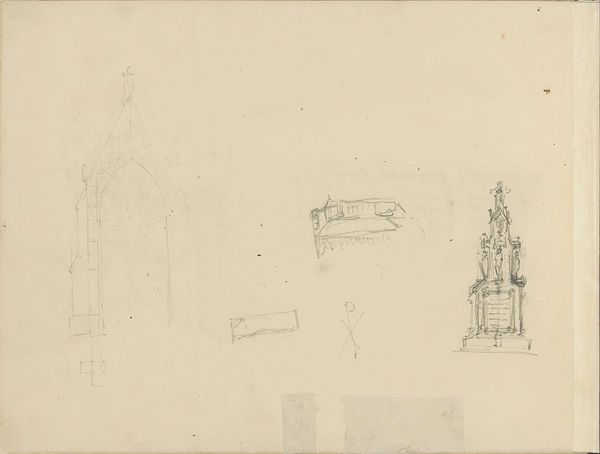
drawing, paper, pencil, architecture
#
drawing
#
amateur sketch
#
light pencil work
#
medieval
#
quirky sketch
#
incomplete sketchy
#
paper
#
personal sketchbook
#
idea generation sketch
#
sketchwork
#
pencil
#
sketchbook drawing
#
sketchbook art
#
architecture
#
initial sketch
Copyright: Rijks Museum: Open Domain
Curator: This delicate drawing is titled "Details van gevel van de Dom van Florence," created circa 1850 by Pierre Joseph Hubert Cuypers. It’s rendered in pencil on paper, offering a glimpse into architectural studies of the time. Editor: The first impression is lightness itself. It feels more like a breath of an idea than a fully formed plan, airy and ethereal in its presentation. Curator: Exactly. Cuypers, known for his role in Dutch Gothic Revival architecture, likely created this as part of his research and preparation. We see a focus on the intricate details of the Florence Cathedral's facade. This wasn’t just about replicating styles; it was about understanding the language of Gothic architecture within its socio-political moment, informing the trajectory of architecture within broader European construction paradigms. Editor: The pointed arches, the tracery... These are quintessential elements, symbols, really, of medieval cathedrals. They represent upward aspiration, the divine reaching down, light entering the sacred space. You feel it even in this fragmentary form. They have an enduring cultural weight that transmits through history. Curator: The choice to focus on detail also tells us something. In the 19th century, architecture became a battleground. Revivalist movements weren't just aesthetic choices. They signaled cultural and political alliances. Drawing like these allowed for a dissection, a study of power dynamics implicit in built form. Editor: Yes, a form of visual excavation. It's almost as if Cuypers is trying to understand the inner logic, the underlying principles of the Gothic mind as manifested in stone. And by reproducing these images, even in a humble pencil sketch, they perpetuate through continuous repetition, an entire belief system. Curator: It really pushes us to look at buildings as something beyond stone and mortar, right? They’re physical embodiments of ideology. Editor: And this particular drawing freezes a specific moment of aesthetic inquiry, which makes it rather wonderful. Curator: Agreed. These types of initial drawings add value to our understanding of later architectural designs, providing a window into the thought processes which shaped those architectural icons. Editor: It brings the past a little closer, somehow.
Comments
No comments
Be the first to comment and join the conversation on the ultimate creative platform.
